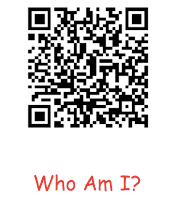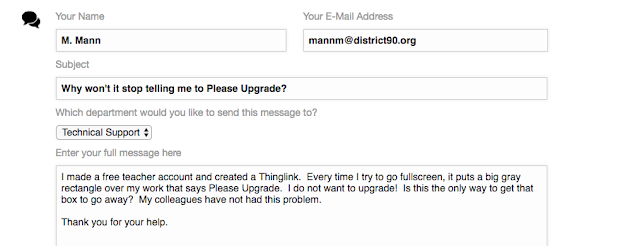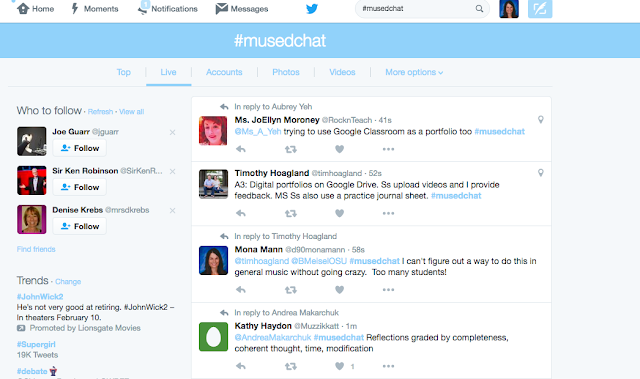Looking to the end of EDU776, I feel infinitely better prepared to teach students using technology. In fact, just recently, I was part of the pilot team representing the special area teachers for Schoology, a new learning management system for Roosevelt School. As I sat through the day-long training, we were asked about our familiarity with terms like embedding and linking. We were shown sites like YouTube, Quizlet, Popplet, and Prezi, and how to use all of these within the context of Schoology. There was a time not long ago that I might have felt so overwhelmed by the sheer quantity of new information that I would have just shut down, or decided that as a music teacher, there wasn't much application for it.
Instead, I got excited as we created a trial group. We all figured out how to embed a YouTube into a message and I embedded my Thinglink just for the heck of it. I felt great! Now that I have given myself permission to "mess around" with different mediums (such as Weebly, or Blogger) it just doesn't seem so mysterious. Also, I have learned that there is usually more than one way to arrive at your desired destination. A few years ago, I was more inclined toward rigid thinking, i.e. I'm just going to follow the directions on this piece of paper, and that's it! If it didn't work, I would write off the whole idea. But, after this class, trying out different avenues doesn't seem so scary. I don't have to know how to use a site to just give it a try.
As far as my teaching curriculum goes, I am much more comfortable with the idea of integrating certain technologies into the classroom than I was previously. I will continue to work with SMART Notebook, in order to further improve my lessons and make them more interactive. For example, during this class, I realized, by "messing around' that there is a way to embed my favorite YouTubes right into SMART Notebook. The first time I did it, I was working in the auditorium and I wanted to jump up and down and shout, but no one even knew what I had just learned! I am excited about using Schoology, and about the possibilities that using QR Codes and Audioboom have to offer for parent communication.
Brenda Latzke and I set up a website on Weebly today for our WebQuest project, Blues-School. We set up the basic structure of the site on about a half hour. Here is our Introduction Page:
I have done lots of professional development in music teaching, to the point that it starts to feel a little redundant. But taking this class with a variety of teachers in other disciplines through the lens of using technology in our classrooms was invaluable to me. Maybe we can have a Level II Ed Tech course, just the way we do in Orff-Schulwerk teaching. Until that time, I plan on continuing to improve and update my website, as well as my blog.










